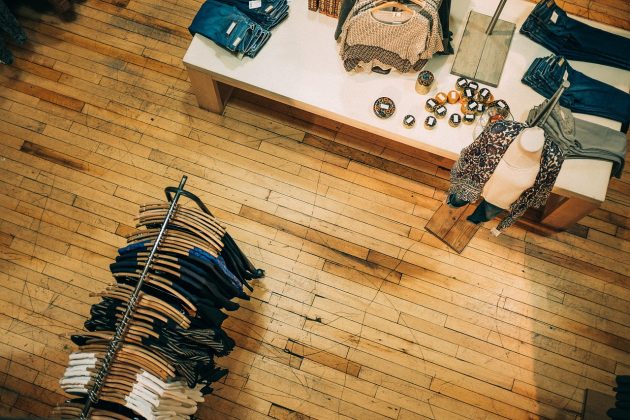In the past decade, eCommerce has taken an extraordinary journey, colonizing one retail category after another. The fashion industry has not been left out of this digital disruption. The emergence of eCommerce is revolutionizing the fast fashion sector, and many players are scrambling to take a slice of the pie.
Fast fashion collections are based on the latest catwalk trends. They’re manufactured cheaply and quickly to allow mainstream consumers to access current clothing styles at lower prices. The fast fashion process started in the 1990s but has been accelerated by the rise and rise of eCommerce. The fast fashion industry has grown 21 percent over the last three years and is expected to grow further in the next three years, at a rate of 5.91 percent per year.
Let’s take a closer look at how eCommerce is fueling the fast fashion industry.
Much Faster Fashion
Fashion trends change quickly. The ability to pick these trends up and make products available to customers is what separates successful fast fashion brands from the rest. The approach has made Zara, H&M, and Topshop rise to the top of the fashion pyramid.
Brands that have also shortened the time from trends to making items available with the help of their eCommerce websites, such as Boohoo, ASOS, and Missguided, are also enjoying great success. For example, thanks to its responsive eCommerce sites and international growth, Boohoo’s sales rose by 51 percent in 2017.
Missguided is also experiencing continued growth. It updates its website with new stock on a daily basis and puts effort toward having the most recent trends on the site within a week of them coming out. At any given time, ASOS stocks more than 60,000 items. The eCommerce retailer updates its inventory with the latest products constantly, based on its findings on how well or poorly trends are performing online. This allows the retailer to deliver a steady stream of the newest trends to consumers.
Such speed and agility are easier with eCommerce than physical retail channels, where there’s no centralization of outlets and the overheads impose limits on financial resources.
Unprecedented Omni-Channel Service
Some of the fast fashion companies enjoying the most success are those that are offering a seamless omnichannel option, which uses eCommerce as a channel to complement real-world retail presence. This approach allows consumers to shop online and pick up the items at the store in a click-and-collect operation. While it’s possible to buy online and opt for home delivery, the click-and-collect omnichannel option has gained popularity among consumers.
Click-and-collect has allowed fashion outlets to increase sales. New Look, which is one of the most popular brands in the fast fashion industry, found that 25 percent of its click-and-collect customers made additional purchases when they visited outlets to pick up their orders.
Ability to Forecast Demand
When it comes to fast fashion, consumers desire value as well as speed. Through eCommerce sites, companies can test consumer demand for a particular trend through a small batch of products before choosing to roll out more stock in the store. This reduces their risk of being left with unsold inventory.
ASOS, for example, keeps track of how trending items are selling online and then adjusts its inventory correspondingly. That reduces its chances of remaining with a pile of unsold stock. Boohoo similarly produces few hundreds of items, to try them for sale on its online store. Only the items that prove fruitful during the initial sales are reordered. This highly beneficial model isn’t a viable option for brick-and-mortar fashion stores.
Easier Expansion
E-commerce allows fast fashion companies to take an experimental approach in regional and global markets while reducing logistical costs. Companies are able to establish operations in the new markets without requiring real estate investment and have an easier time gaining a foothold in the new markets.
In 2017, Boohoo was able to grow its revenue by 33 percent in the UK, 50 percent in Europe, 140 percent in the US and 40 percent in the rest of the world.
Celebrity Endorsement
Influencer marketing helps in raising brand awareness, enhance engagement, and increase conversions. E-commerce businesses, especially in the fashion industry, stand to gain the most from this integral component of digital marketing.
When celebrities wear a certain product from the catwalk, they cause a clamor and can spark instant demand. Fast fashion brands are using this to their advantage. PrettyLittleThing has increased brand awareness by working with the likes of Sofia Richie and Kylie Jenner. The company has also worked with well-known names, such as Lucy Meck, to help them create their own clothing lines. Topshop has worked with Alexa Chung whereas Nasty Gal and Forever 21 have been endorsed by Kylie and Kendall Jenner.
Celebrity endorsements have strengthened the connection of fast fashion retailers with their customers and helped portray them as offering items that are more authentic and original. As a result, the retailers have added more expensively priced goods to their inventories without deterring their existing customers. For example, Topshop now has $170 boots, $230 shift dresses, and $330 coats that are in sharp contrast to its usual $20 t-shirts and $18 crop tops.
Search Engine Optimization
Consumers are increasingly performing detailed searches for fashion pieces on Google. Now more than ever, it’s important for fashion products to be found in search engines results by users, that’s where SEO comes in.
Although the continued growth of online retailers shows that eCommerce has transformed fast fashion into a popular trend that could be here to stay. With the constant evolution of eCommerce and digital technologies, we can only expect this fashion category to become faster and agiler. The companies that will adapt will keep succeeding. Those that don’t, may soon be yesterday’s news.
